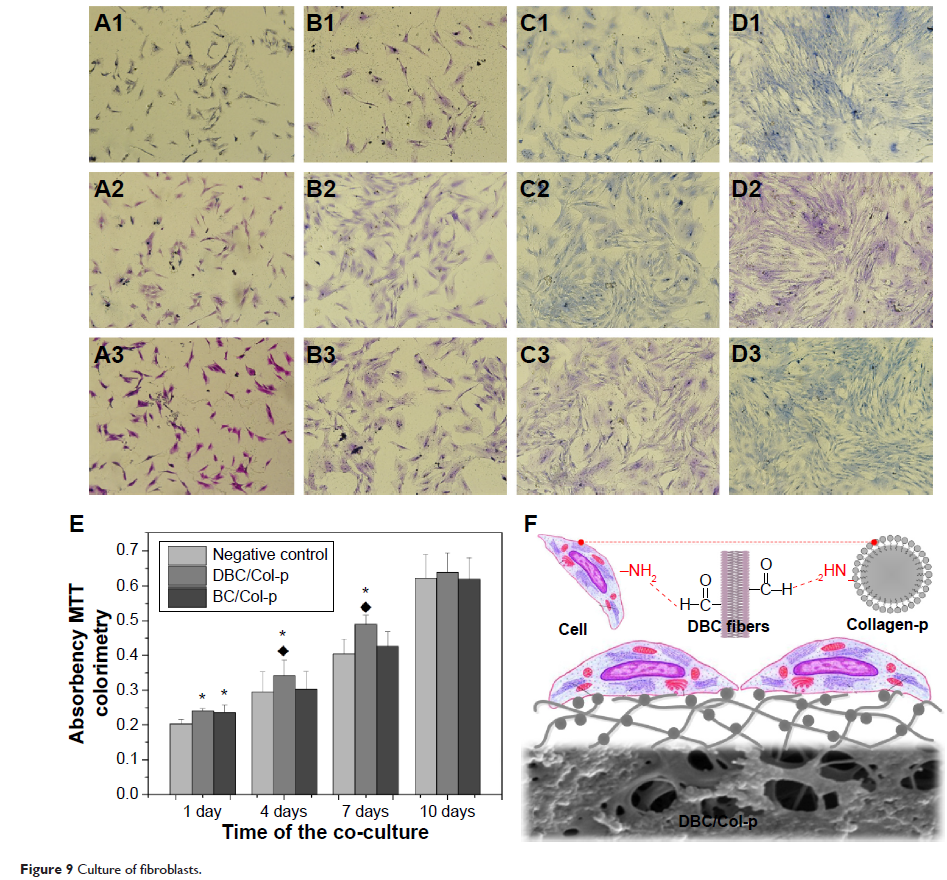109669
论文已发表
注册即可获取德孚的最新动态
IF 收录期刊
- 3.4 Breast Cancer (Dove Med Press)
- 3.2 Clin Epidemiol
- 2.6 Cancer Manag Res
- 2.9 Infect Drug Resist
- 3.7 Clin Interv Aging
- 5.1 Drug Des Dev Ther
- 3.1 Int J Chronic Obstr
- 6.6 Int J Nanomed
- 2.6 Int J Women's Health
- 2.9 Neuropsych Dis Treat
- 2.8 OncoTargets Ther
- 2.0 Patient Prefer Adher
- 2.2 Ther Clin Risk Manag
- 2.5 J Pain Res
- 3.0 Diabet Metab Synd Ob
- 3.2 Psychol Res Behav Ma
- 3.4 Nat Sci Sleep
- 1.8 Pharmgenomics Pers Med
- 2.0 Risk Manag Healthc Policy
- 4.1 J Inflamm Res
- 2.0 Int J Gen Med
- 3.4 J Hepatocell Carcinoma
- 3.0 J Asthma Allergy
- 2.2 Clin Cosmet Investig Dermatol
- 2.4 J Multidiscip Healthc

已发表论文
通过共价键使二醛细菌纤维素纳米纤维的胶原蛋白肽固定化,可用作骨组织工程和再生
Authors Wen XX, Zheng YD, Wu J, Wang LN, Yuan ZY, Peng J, Meng HY
Published Date July 2015 Volume 2015:10 Pages 4623—4637
DOI http://dx.doi.org/10.2147/IJN.S84452
Received 12 March 2015, Accepted 1 May 2015, Published 21 July 2015
Abstract: Bacterial cellulose (BC) is an alternative nanostructured biomaterial
to be utilized for a wide range of biomedical applications. Because of its low
bioactivity, which restricted its practical application, collagen and collagen
hydrolysate were usually composited into BC. It is necessary to develop a new
method to generate covalent bonds between collagen and cellulose to improve the
immobilization of collagen on BC. This study describes a facile dialdehyde
BC/collagen peptide nanocomposite. BC was oxidized into dialdehyde bacterial
cellulose (DBC) by regioselective oxidation, and then composited with collagen
peptide (Col-p) via covalent bonds to form Schiff’s base type compounds, which
was demonstrated by the results of microstructures, contact angle, Col-p
content, and peptide-binding ratio. The peptide-binding ratio was further
affected by the degree of oxidation, pH value, and zeta potential. In vitro
desorption measurement of Col-p suggested a controlled release mechanism of the
nanocomposite. Cell tests indicated that the prepared DBC/Col-p composite was
bioactive and suitable for cell adhesion and attachment. This work demonstrates
that the DBC/Col-p composite is a promising material for tissue engineering and
regeneration.
Keywords: bacterial cellulose, dialdehyde cellulose, collagen peptide, composite materials, cytoactivity
Keywords: bacterial cellulose, dialdehyde cellulose, collagen peptide, composite materials, cytoactivity
